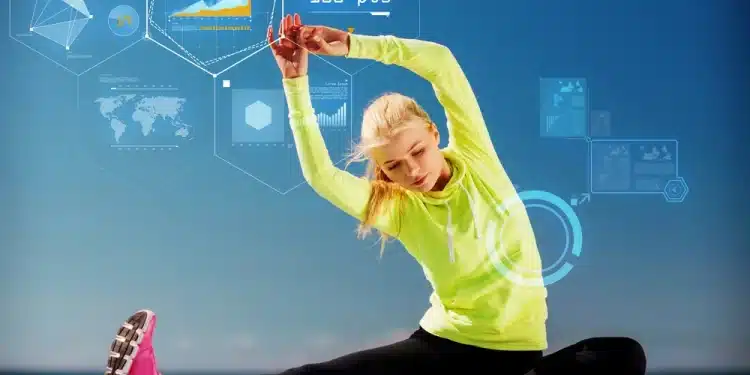The pursuit of fitness and wellness often requires determination, discipline, and consistency. But what if exercise could be as exciting and engaging as playing your favorite video game? This is the concept behind gamification in fitness apps—an innovative approach that leverages game-like elements to make workouts more enjoyable, motivating, and interactive. In recent years, gamification has transformed the fitness landscape, turning exercise routines into immersive experiences that keep users coming back for more. In this article, we’ll explore how fitness apps are harnessing the power of gamification to boost motivation, foster engagement, and revolutionize the way we approach staying active.
Table of Contents
The Science of Gamification
Gamification is rooted in the psychology of motivation and reward systems. By integrating elements commonly found in games, such as challenges, rewards, competition, and progression, fitness apps tap into our innate desire for achievement, competition, and immediate gratification. These game-like elements trigger the release of dopamine—the “feel-good” neurotransmitter—creating a sense of accomplishment and reinforcing positive behavior.
Gamification in Fitness Apps: Transforming Workouts into Adventures
Fitness apps are taking gamification to new heights by infusing exercise routines with elements of fun, adventure, and competition. Here’s how gamification is redefining the fitness experience:
1. Virtual Challenges and Missions
Fitness apps often include virtual challenges and missions that encourage users to achieve specific goals. Whether it’s completing a certain number of steps, running a specific distance, or mastering a new exercise, these challenges provide a sense of accomplishment and progression, similar to conquering levels in a game.
2. Achievement Badges and Trophies
Just as video games award badges or trophies for completing tasks or reaching milestones, fitness apps reward users with virtual badges, trophies, or medals for achieving fitness goals. These digital symbols of accomplishment not only recognize users’ efforts but also create a sense of pride and motivation to collect more badges.
3. Progress Tracking and Visualizations
Gamification thrives on visual feedback. Fitness apps utilize progress tracking and visualization tools to show users how far they’ve come. Graphs, charts, and timelines provide a clear representation of their fitness journey, inspiring them to keep pushing forward.
4. Personalization and Leveling Up
Similar to advancing through levels in a game, fitness apps employ personalization and leveling up mechanisms. As users complete workouts, achieve milestones, and conquer challenges, they “level up,” unlocking new exercises, workout routines, and achievements that keep them engaged and excited to continue.
5. Competition and Leaderboards
Competition is a driving force in both games and fitness. Many apps integrate leaderboards and community features that allow users to compete against friends, family, or other users. This sense of friendly rivalry encourages consistency and pushes users to excel.
6. Storytelling and Narratives
Some fitness apps weave storytelling and narratives into the user experience. By immersing users in virtual worlds or scenarios, apps turn workouts into epic adventures where users are heroes conquering challenges, making exercise more exciting and engaging.
Impact on Motivation and Engagement
The impact of gamification on motivation and engagement cannot be overstated:
1. Increased Adherence
Gamified fitness apps are designed to make exercise enjoyable, which leads to improved adherence. When workouts are fun and rewarding, users are more likely to stick to their routines and maintain their fitness goals.
2. Goal Orientation
Gamification enhances users’ goal-setting mindset. By offering challenges and rewards, apps create a clear sense of purpose, encouraging users to strive for objectives and track their progress.
3. Overcoming Plateaus
Stagnation and plateaus are common hurdles in fitness. Gamification injects novelty and excitement into routines, helping users overcome plateaus by motivating them to explore new exercises and achieve new milestones.
4. Psychological Reward
The immediate rewards and achievements gained from gamified fitness apps trigger the release of dopamine, creating a sense of accomplishment and satisfaction. This psychological reward reinforces positive behavior and strengthens the connection between exercise and pleasure.
5. Sustainable Lifestyle Change
Gamification fosters a positive relationship with exercise, transforming it from a chore into a habit. This shift lays the foundation for long-term lifestyle changes that prioritize health and well-being.
Examples of Gamified Fitness Apps
Zombies, Run!: This app combines storytelling with fitness by immersing users in a post-apocalyptic world where they must complete missions while outrunning virtual zombies. The app turns running into an interactive adventure.
Strava: Strava integrates leaderboards and segment challenges, allowing users to compete with friends and other users on specific routes. It also awards users “achievements” for hitting distance or time milestones.
Pokémon GO: Although not strictly a fitness app, Pokémon GO encourages players to walk to find and catch virtual creatures. This concept turns walking into an interactive and engaging activity.
Fiit: Fiit offers a range of on-demand and live fitness classes, and it uses points and achievements to motivate users to complete workouts and challenges, contributing to a sense of progress and accomplishment.
The Future of Gamified Fitness
As technology advances, the potential for gamified fitness experiences continues to grow:
- Virtual Reality (VR) Integration: VR technology could create immersive fitness experiences, allowing users to explore virtual worlds while staying active.
- Augmented Reality (AR) Enhancements: AR could blend real-world environments with virtual elements, making workouts even more interactive and exciting.
- Customizable Avatars and Characters: Users might be able to create avatars or characters that represent them in virtual fitness worlds, enhancing personalization and immersion.
- Data-Driven Adaptations: Gamification could become even more personalized by adapting workouts based on real-time data from wearables, ensuring optimal challenge and engagement.
In Conclusion
Gamification has revolutionized the fitness landscape, transforming exercise routines into interactive, engaging experiences. By infusing workouts with elements of challenge, competition, and reward, fitness apps have successfully harnessed the power of gamification to boost motivation, foster engagement, and make staying active more enjoyable. The integration of game-like features has turned fitness into a journey of self-discovery, achievement, and personal growth. So, the next time you lace up your shoes, strap on your smartwatch, and dive into a gamified workout, remember





